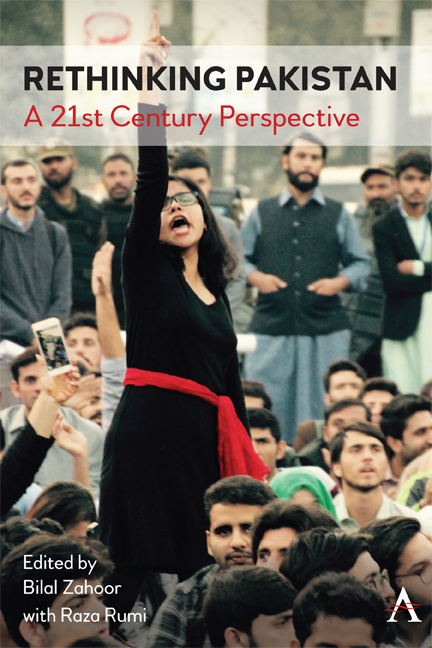Book contents
- Frontmatter
- Dedicated
- Contents
- Acknowledgements
- Introduction
- Part I Identity, Religion and Radicalisation
- Part II Development, Reform and Governance
- Part III Rights, Repression and Resistance
- Part IV Sex, Gender and Emancipation
- Part V Conflict, Diplomacy and Foreign Policy
- Contributors
- Bibliography
- Index
Chapter 16 - Of Kings, Queens and Pawns: Civil-Military Relations in Pakistan
Published online by Cambridge University Press: 20 January 2022
- Frontmatter
- Dedicated
- Contents
- Acknowledgements
- Introduction
- Part I Identity, Religion and Radicalisation
- Part II Development, Reform and Governance
- Part III Rights, Repression and Resistance
- Part IV Sex, Gender and Emancipation
- Part V Conflict, Diplomacy and Foreign Policy
- Contributors
- Bibliography
- Index
Summary
In July 2018, Pakistan witnessed its eleventh general election and the third one in which power was transferred from one political government to another without any interruption from the military. Can this, then, be defined as a watershed moment when civilmilitary relations (CMR) have started to shift in favour of the former? Or do we require a different lens to evaluate the power of the military versus civilian institutions? The CMR imbalance lies at the heart of the nature and quality of governance and is a critical determinant of the future of politics, state and society in Pakistan.
Indeed, Pakistan is less likely to see a military coup as it experienced in 1958, 1969, 1977 and 1988. Is this because of greater political activity as in the case of the Pashtun Tahafuz Movement (PTM), a movement comprising a younger Pashtun ethnic leadership demanding rights for their people based on the 1973 constitution? Or is it due to a visibility of mild discomfort in Punjab, expressed during the 2018 elections, in favour of the Pakistan Muslim League-Nawaz (PML-N)? In both cases, the deep state, a term used to refer to the military, used mild to extreme force to curb dissent. Despite that, scholars like Akbar Zaidi believe that the use of force in itself is indicative of change, because such actions denote panic among the generals that, in turn, could be the beginning of the end of military power in Pakistan. Looking at public protests against General Pervez Musharraf, from the mid-2000s, Zaidi believes that people have gradually gained the power to challenge a political army.
However, I argue in this chapter that while these developments are exciting to watch, the country is nowhere close to a shift in the balance of power. The lack of change is because stable democracy is a by-product of two factors: a steady electoral process and political liberalism in which civilian institutions, such as the civil society and media, thrive. Elections alone cannot ensure improvement in the CMR imbalance, and that too elections fraught with rigging.
- Type
- Chapter
- Information
- Rethinking PakistanA 21st Century Perspective, pp. 167 - 176Publisher: Anthem PressPrint publication year: 2020



